Snell Knot: A Comprehensive Guide to Tying and Usage
The Snell knot is a widely used fishing knot that aligns the fishing line or leader with the shank of the hook. This knot is known for its reliable straight-line pull when setting the hook, making it a popular choice among anglers. The Snell knot has several variations, but the most common version is known for its simplicity and effectiveness.
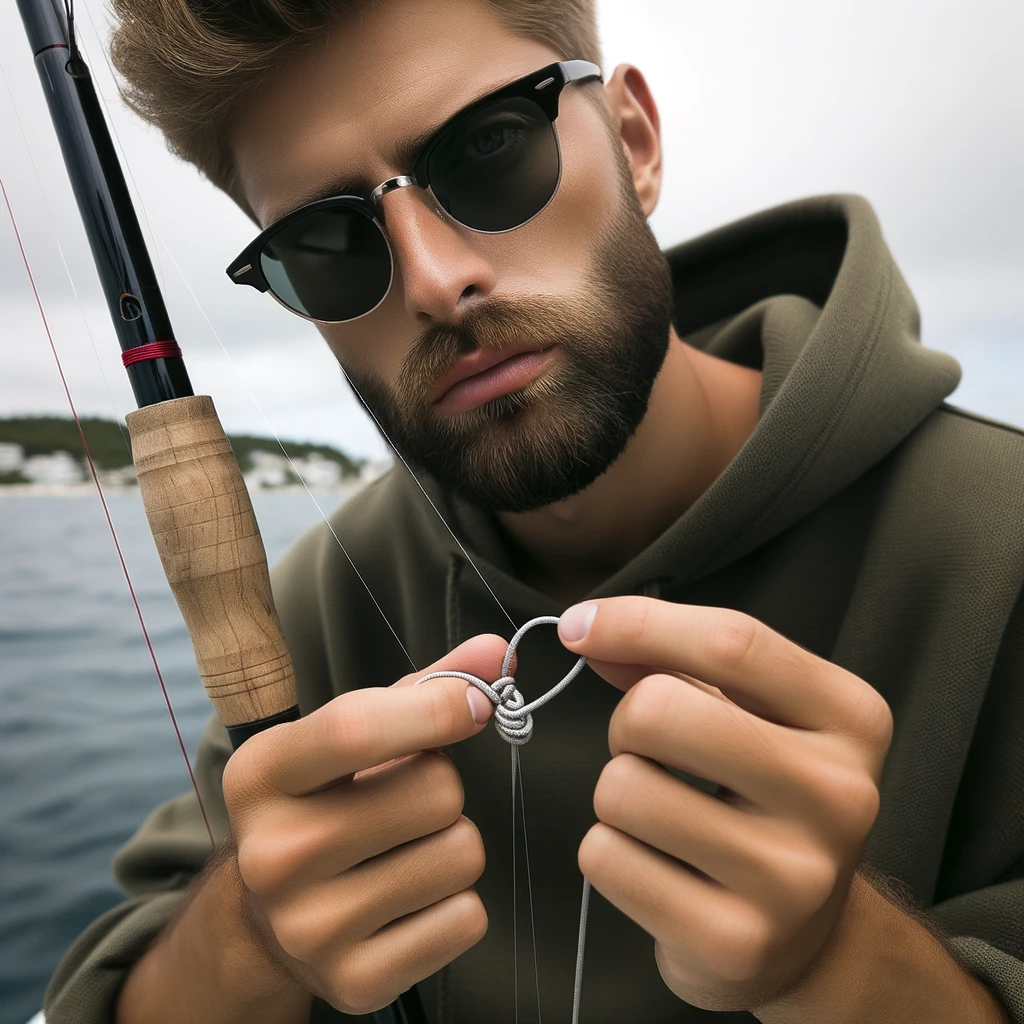
Understanding the fundamentals of tying a Snell knot is crucial for successful fishing experiences. Not only does this knot provide a strong, secure connection between the fishing line and the hook, but it is also highly adaptable to different types of hooks, including circle hooks and octopus hooks. When tied correctly, the Snell knot can make a significant difference in the outcome of a fishing trip.
In this article, we will guide you through the step-by-step process of tying a Snell knot, discuss its various applications in fishing, and introduce you to other Snell knot variations worth considering. With this information, you'll be well-equipped to choose the best Snell knot for your fishing needs and know when and how to use it effectively.
Key Takeaways
- Tying a Snell knot provides a strong and secure connection between the fishing line and the hook.
- Understanding different variations of the Snell knot can enhance your fishing technique.
- The Snell knot's versatility allows it to be used with various types of hooks and applications in fishing.
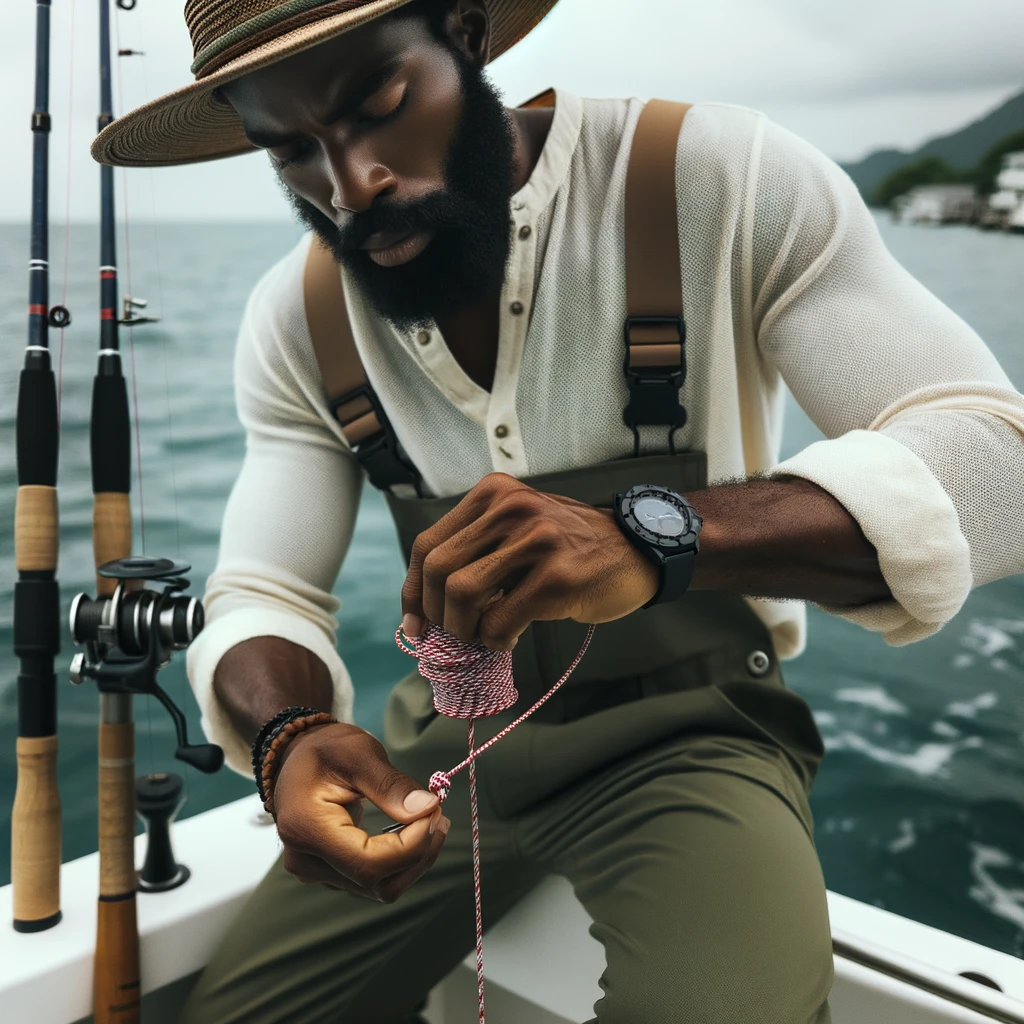
Understanding the Basics
Components of a Snell Knot
A Snell knot is a reliable and strong knot used in fishing to secure the fishing hook to the main line. It maintains a straight connection to the hook, making it perfect for catching larger fish. The basic components of a Snell knot include the hook, hook shank, hook eye, tag end, main line, and loop.
To tie a Snell knot, first run the tag end through the hook eye toward the point of the hook, forming a small loop. Make sure you have about four inches of tag end to work with. Next, wrap the tag end around the hook shank and the main line, making 5-7 wraps from the hook point to the eye. Finally, feed the tag end through the loop you initially formed and carefully tighten the knot.

Types of Hooks
The Snell knot can be used with various types of fishing hooks, such as circle hooks, octopus hooks, and eyeless hooks. Each type of hook is designed for different fishing situations and species of fish.
Circle Hooks: These hooks have a curved shape and a uniquely designed point that reduces the chances of gut-hooking fish. When using a circle hook, the Snell knot ensures a strong connection and enables the hook to rotate freely, increasing the probability of secure hookups.
Octopus Hooks: Octopus hooks have a rounded, turned-up eye, and a short shank, making them suitable for live bait fishing. The Snell knot allows for a strong, straight connection to the main line, which helps maintain the hook's position when setting the hook.
Eyeless Hooks: Some fishing hooks do not have an eye and instead rely on a Snell knot to secure the hook to the line. By wrapping the line around the shank and creating a loop, the Snell knot ensures a reliable connection between the hook and the main line even without an eye.
In conclusion, understanding the basics of a Snell knot and the types of hooks it can be used with is essential for anglers looking to increase their odds of success on the water. By mastering the art of tying a Snell knot, you can enhance the effectiveness of your fishing techniques while targeting various fish species.
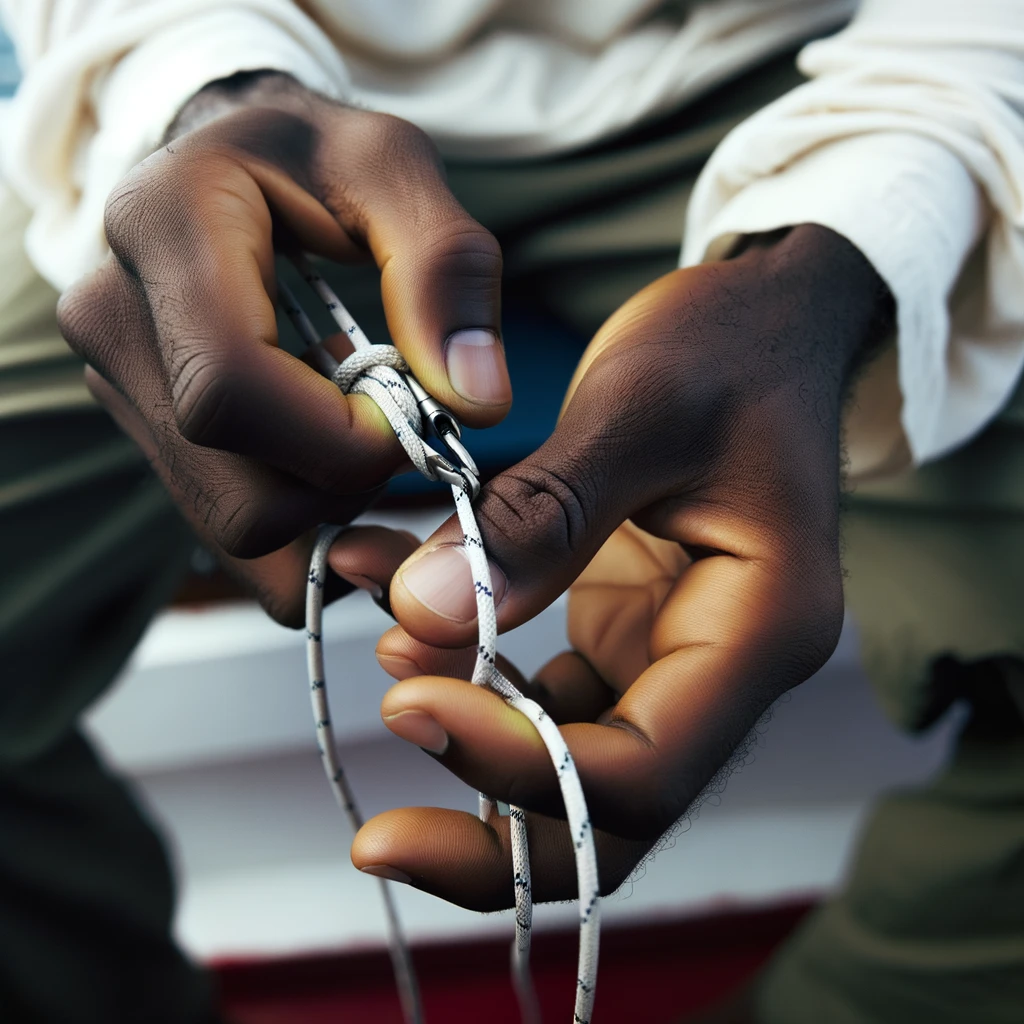
Step-By-Step Guide to Tying a Snell Knot
Basic Snell Knot
The Basic Snell Knot is an essential skill for anglers. To tie this knot, follow the steps below:
- Pass the leader through the eye of the hook from the point side.
- Create a small loop by bringing the tag end of the leader behind the hook shank, leaving about 4 inches of the tag end to work with.
- Wrap the tag end around the hook shank and the standing part of the leader, starting from the hook point and working towards the eye.
- Make 5 to 7 wraps and then pass the tag end through the small loop.
- Hold the standing part of the leader and pull the tag end to tighten the knot.
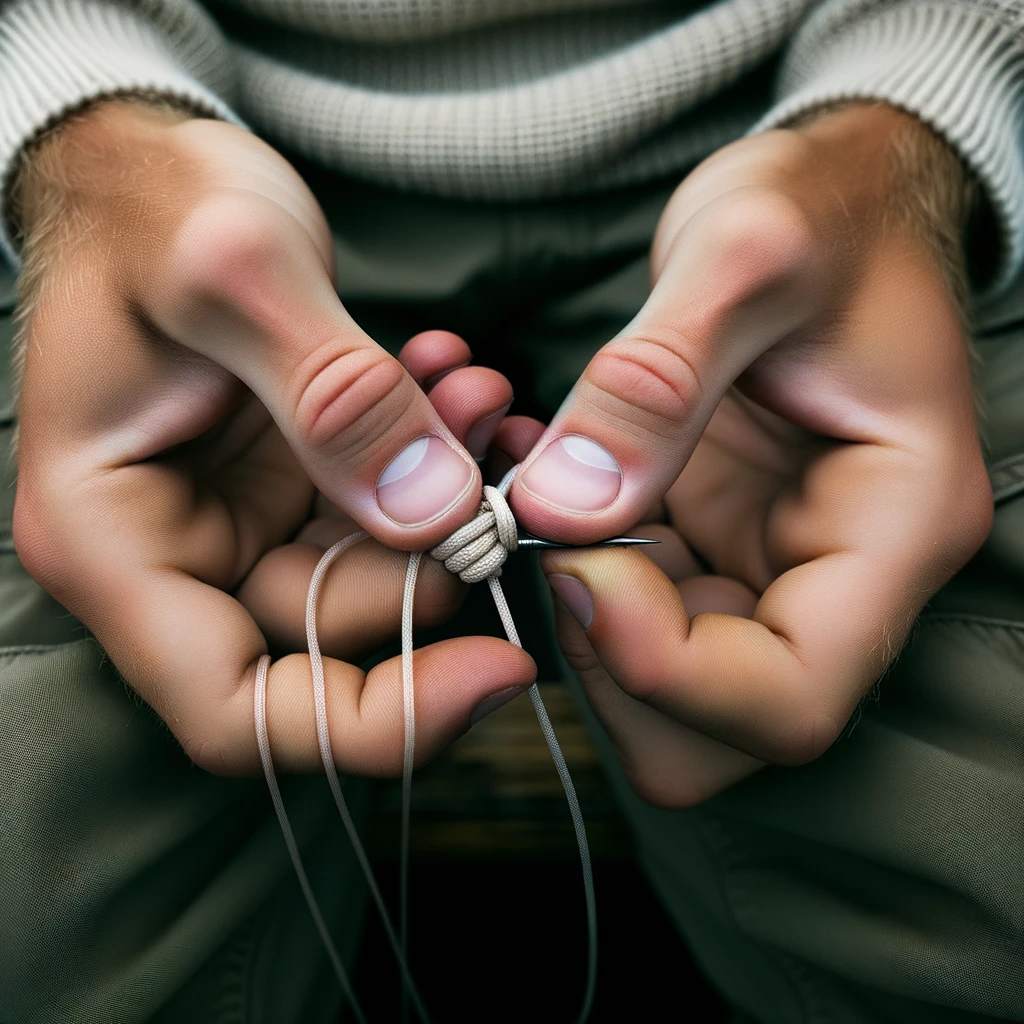
Easy Snell Knot
The Easy Snell Knot is a simpler version of the Basic Snell Knot. Use this method when time is limited or tying in challenging conditions:
- Run the leader through the hook eye towards the hook point, leaving around 4 inches of the tag end to work with.
- Form a small loop and hold it against the hook shank.
- Wrap the tag end around the hook shank and the standing part of the leader, making 5 to 7 wraps from the hook point to the eye.
- Feed the tag end out through the loop that was created.
- Gradually pull the standing part to tighten the wraps and secure the knot.

Improved Snell Knot
The Improved Snell Knot, also known as the Uni-Snell Knot, is an enhancement of the Basic Snell Knot, providing a more reliable hold for stronger fish:
- Take the leader line through the eyelet on the same side as the hook tip and leave 10 to 12 inches of tag line.
- Create a small overhand loop and pinch it onto the base of the hook.
- Wrap the tagline around the base of the hook and pass it back through the loop.
- Repeat this process 5 to 7 times, ensuring the wraps remain tight and even.
- Hold the standing part of the leader and pull the tag end to tighten and secure the knot.
This step-by-step guide provides a solid foundation for tying a Snell Knot, ensuring a secure and reliable connection between the hook and leader. By mastering these techniques, anglers can increase their chances of success when targeting various types of fish.

Other Variations of Snell Knots
In addition to the basic version of the snell knot, there are several other variations that offer their own advantages and applications in fishing. This section covers some of the more notable alternatives, including the Nail Snell Knot, Uni-Snell Knot, Double Snell Knot, Sliding Snell Knot, and Knotless Knot.
Nail Snell Knot
The Nail Snell Knot is a variation that incorporates the Nail Knot into its structure. This knot is useful for tying a snell knot to a fly or hook while using a hard fishing line, such as fluorocarbon. As with the basic snell knot, the nail snell knot provides a strong connection between the line and the hook, but offers additional advantages for certain types of fishing lines and situations.
Uni-Snell Knot
The Uni-Snell Knot is an adaptation of the popular Uni Knot. This version is considered to be one of the easiest and most efficient ways to tie a snell knot, making it ideal for beginners or those in need of a quick, reliable connection. The Uni-Snell Knot is particularly useful when using cut bait or dead bait on the bottom for big redfish, black drum, snook, and tarpon.
Double Snell Knot
The Double Snell Knot is a variation that involves using two hooks tied in tandem on the same line. This knot is beneficial when targeting larger fish or when using larger baits, as it increases the chances of hooking the fish securely. Additionally, it can be used in different fishing scenarios, such as trolling, bottom fishing, or even float fishing.

Sliding Snell Knot
The Sliding Snell Knot is another interesting adaptation of the traditional snell knot. In this variation, the knot is designed to allow the hook to slide and find the best-positioned hook point during a strike. This is particularly useful in situations where the fish are biting at the bait rather than fully ingesting it, as it can promote a more effective hookset.
Knotless Knot
The Knotless Knot is an alternative version of the snell knot that eliminates the need for a separate knot to tie the line to the hook. Instead, the line is threaded through the hook's eye twice, creating an adjustable loop that can be tightened or loosened as needed. This knot is considered to be simpler than some of the other variations and is particularly popular among carp and coarse fishers who use hair rigs with their bait presentation.
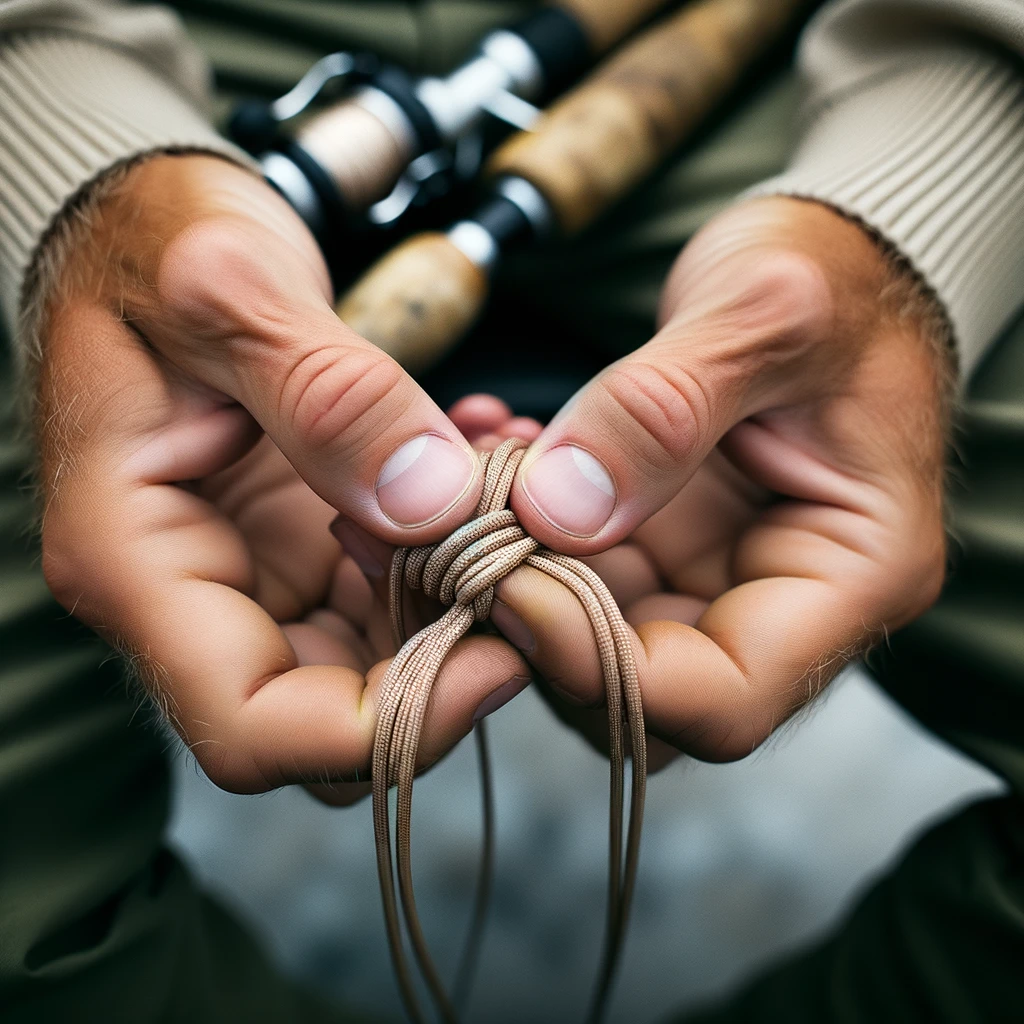
Applications of the Snell Knot in Fishing
Using Live Baits
The snell knot is commonly used in fishing when live baits are involved. This knot allows the bait to move more freely and naturally, increasing the chances of attracting target fish species. It's especially effective when fishing for catfish, as they rely heavily on their sense of smell to locate food. The snell knot is also beneficial when using live baits with sharp teeth, as this knot can prevent the bait from cutting the line. Circle hooks paired with a snell knot are a popular combination for live bait fishing.
Fishing Big Game
Big game fishing often requires strong knots that can withstand aggressive strikes and heavy loads. The snell knot is an excellent choice for these situations, as it provides a secure and reliable connection between the fishing line and the hook. Moreover, the snell knot offers better alignment between the hook and the line, which is crucial when targeting large and powerful fish.
Fly Fishing
While the snell knot may not be as common in fly fishing as other knots, it still has its applications. Certain fly-fishing scenarios, such as targeting toothy species or using weighted flies, can benefit from the strength and security of the snell knot. The quick and efficient tying process of the snell knot makes it a convenient option for fly anglers on the water.
Pitching and Flipping Heavy Cover
When fishing in heavy cover, such as dense aquatic vegetation, it is crucial to have a knot that can withstand the strain of pulling through the obstacles. Pitching and flipping techniques require a secure knot that can maintain its strength under these tough conditions. The snell knot is an excellent choice for this purpose, with its secure connection and low profile allowing for easier passage through the dense growth. The snell knot is often used in combination with heavy-duty hooks and lines, making it an ideal choice for punching through heavy cover.

Comparing Line Types
When it comes to snell knots, the type of fishing line used can have a significant impact on the knot's performance. In this section, we will explore three popular line types: monofilament, fluorocarbon line, and braid.
Monofilament
Monofilament is a common choice for fishermen, especially beginners. It's easy to work with, affordable, and has good knot strength. When it comes to tying a snell knot, monofilament provides a decent grip on the hook, ensuring a secure connection. However, it does have some drawbacks. Monofilament line tends to have more stretch than other line types, which can reduce sensitivity and its ability to transmit the straight-line pull of the fish. Additionally, monofilament line has a lower abrasion resistance compared to fluorocarbon or braid, which could lead to breakages in challenging fishing conditions.
Fluorocarbon line
Fluorocarbon line is a popular choice among more experienced anglers due to its excellent abrasion resistance and low visibility in water. When used with a snell knot, fluorocarbon line's reduced stretch and increased sensitivity make detecting subtle fish bites easier. The low visibility of the line also allows for a more stealthy approach in clear water conditions, increasing the chances of success. However, fluorocarbon does have a stiffer feel compared to monofilament, which might make it slightly more challenging to work with when tying a snell knot. Furthermore, it's generally more expensive than monofilament.
Braid
Braid lines are known for their high strength-to-diameter ratio, providing an excellent choice for heavy cover fishing or targeting big fish species. Due to its lack of stretch, braided lines offer excellent sensitivity, which can be beneficial when using a snell knot. However, tying a snell knot with braided line may require extra care and attention since it can be slippery, and the knot may not hold as well as with monofilament or fluorocarbon lines. Additionally, braid lines are highly visible in clear water, which can deter some fish species.
In summary, monofilament, fluorocarbon, and braid lines each have their advantages and disadvantages when used with snell knots. The choice ultimately depends on the fishing conditions, target fish species, and personal preferences of the angler.

Securing the Knot
Snell knots are a popular choice among anglers for their ability to create a secure connection between the fishing line and hook. To ensure the knot is properly fastened, one must follow a series of steps during the tying process. Moreover, using snell knots with certain types of hooks, such as circle hooks and octopus hooks, is considered most effective for a solid hook set.
One of the critical aspects of tying a snell knot is passing the line through the eye of the hook and looping it around the standing part of the line. After achieving this initial step, it's essential to wrap the line several times (typically 6 to 7 times) around both the standing part and shank of the hook source.
While wrapping, it's crucial to maintain even tension and ensure that each turn lies smoothly against the previous one to create a secure knot. Once all required wraps are completed, gently pull on the standing part of the line to tighten the knot. As the wraps are compressed, they produce a strong and uniform bond with the hook, significantly enhancing the hook set.
There are other factors that contribute to the strength and security of the snell knot. It's important to consider the type of hook being used, as certain hooks are more compatible with snell knots than others. As mentioned earlier, circle hooks and octopus hooks work well with snell knots, due to their shape and design, and are more likely to ensure an effective hook set source.
In conclusion, the snell knot is a reliable and trusted choice for many anglers seeking a secure knot that can effectively hold the hook to the fishing line. By following the precise steps necessary for tying and ensuring compatibility with the chosen hook type, one can expect an improved hook set and overall fishing experience.

Final Thoughts
The Snell Knot is a useful and strong knot that has various applications in fishing. It is often utilized when attaching hooks to leader lines, providing a strong and reliable connection for anglers. For instance, the Easy Snell Knot can be tied by passing the end of the rope through the hook eye, wrapping it around the standing part 7 times, and passing it through the last loop.
One significant advantage of the Snell Knot is its ability to maintain the hook's orientation. This aspect improves the hook set, allowing for a better catch rate. There is a multitude of versions of the Snell Knot, but it is essential to choose the one that best suits the angler's needs.
However, it is crucial to remember that the Snell Knot may not be suitable for all fishing situations. In some cases, alternative knots, like the Palomar or Uni Knot, might be more suitable depending on the type of hook and line used. The key is to practice tying the Snell Knot and familiarize oneself with its strengths and limitations.
Overall, incorporating the Snell Knot into an angler's repertoire can significantly improve fishing success. With enough practice, tying this knot becomes second nature, empowering anglers to face any fishing challenge confidently and efficiently.

Frequently Asked Questions
How do I tie a simple snell knot?
To tie a simple snell knot, pass the end of the rope through the hook eye, wrap it around the standing part 7 times, and pass it back through the last loop. Finally, pull to tighten the knot. This is a common version when attaching circle hooks to leader lines. For a detailed step-by-step guide, you can visit 101knots.
What is the difference between a double snell knot and a traditional one?
The main difference between a double snell knot and a traditional one is that the double snell knot utilizes two hooks instead of just one. This allows for a better chance of catching fish as bait can be attached to both hooks. However, the traditional snell knot is simpler and quicker to tie.
Where can I find a clear snell knot diagram?
You can find a clear snell knot diagram along with an animated illustration on Netknots. The illustrations provided make it easy to follow along and learn to tie the knot effectively.
Which snell knot variant is the strongest?
It is difficult to pinpoint the strongest snell knot variant, as the knot's strength depends on various factors like line material, hook type, and tension applied to the knot. However, the traditional snell knot is known to be quite reliable. Other variants like the sliding snell knot have specific benefits depending on the fishing application.
What tools are available to simplify tying a snell knot?
There are tools available on the market to simplify tying snell knots, such as knot-tying devices and specialized pliers. These tools can assist you in achieving a consistent and tight snell knot without struggling with manual dexterity.
What are the advantages of an improved snell knot compared to the traditional version?
The improved snell knot offers better hook alignment and a tighter connection with the fishing line. This results in a straight pull when catching fish, which can increase the chances of securing a catch. The traditional snell knot may not provide the same level of security and connection.
Charlie is Editor-in-Chief of Sea Magazine